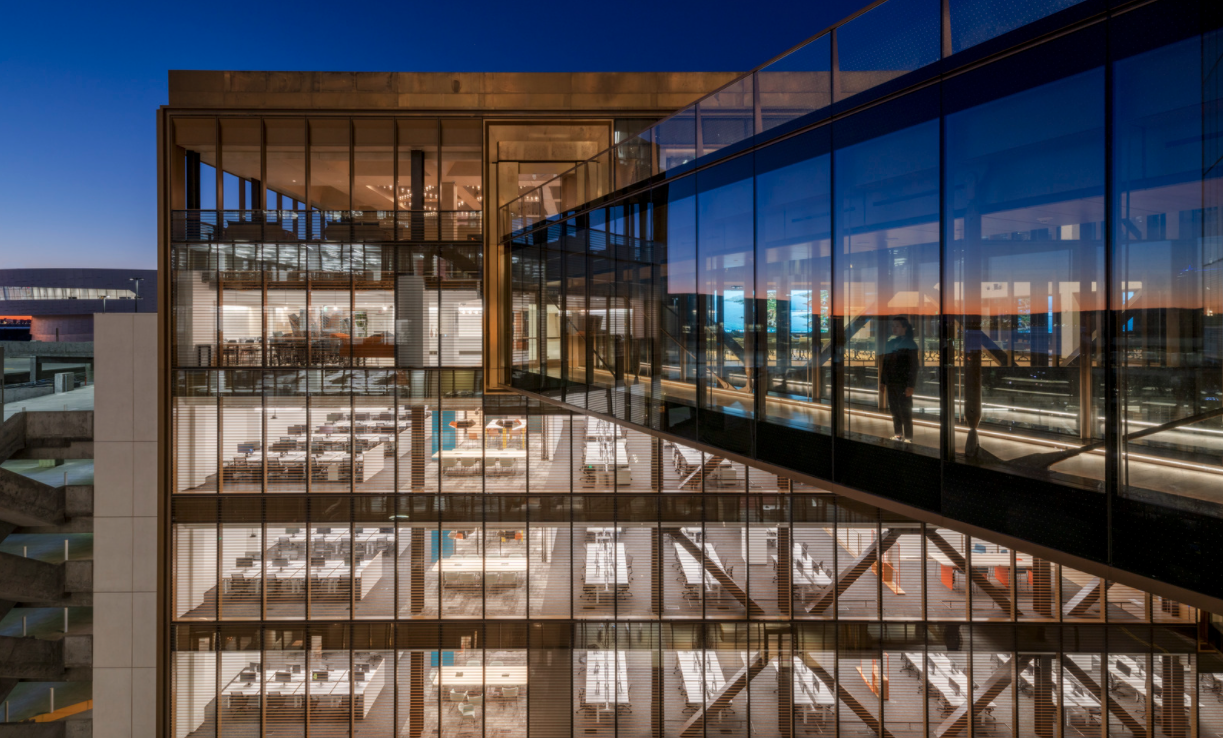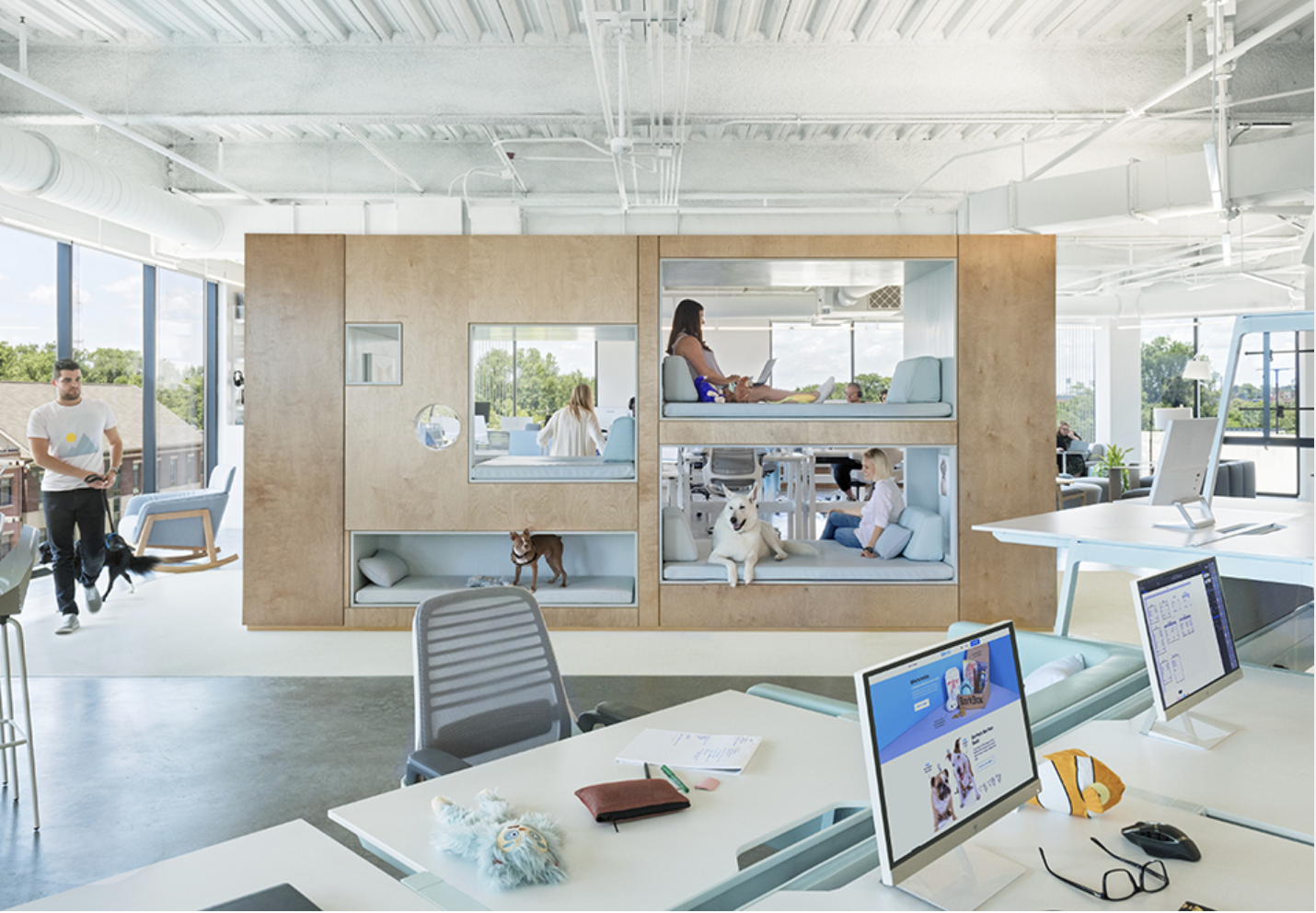It’s a Beautiful Day: Office Neighborhoods To Inspire Your Workplace


As companies and their employees embrace the hybrid workplace, they are redefining the role of the office.
Office neighborhoods give employees a sense of place and community while allowing them to access different work settings. Each neighborhood is constructed to meet the needs of the community it serves while also reinforcing the overall goals of the company. Creating a strong office neighborhood is about more than just creating a beautiful space – though there are some stunning spaces out there.
An effective office neighborhood needs more than powerful Wi-Fi, access to various types of conference rooms and workspaces, and mail services. Take stock of your company’s culture and unique team needs. Do your people require something unique to be productive? Go for it! Now is the time for innovation.
We’ve looked at best practices in theory, but how are companies putting these into action? Here are five office neighborhoods that make us want to be their neighbor.
See how to plan your office neighborhood with space management software.
5 office neighborhood examples
Uber (San Francisco)

(Photo credit: SHoP Architects)
What they got right: Fresh air and open spaces
Uber’s new 423,000 square foot headquarters in San Francisco takes health and safety into account, both mentally and physically. The exterior walls are made of 14-foot-tall panes of glass that open and close on automation, providing ventilation and circulation on a regular schedule. This brings in fresh air while keeping the air inside from becoming stagnant, a bonus in the time of COVID-19.
What’s really striking is the way the building has changed the idea of an atrium, using staircases and walkways to connect floors in an open-concept style. This connects different departments rather than separating them and allows for more spontaneous connectivity among employees. Seating areas and meeting spaces along the walkways create space for face-to-face interaction.
Hygge Coworking (Charlotte)
What they got right: Unapologetically focused on community and core-values
Though a coworking space and not a corporate office, Hygge (pronounced “hoo-ga”) focuses on bringing together entrepreneurs and solo-preneurs to see what synergy ensues.
In addition to meeting space and private offices at their four locations, Hygge looks at the type of people they attract, such as artists and content creators, and provides spaces like podcast studios where they can thrive. They also offer their more than 400 members ongoing community events for interaction and for training/development, as well as a Slack channel for virtual community.
Downtown Works (San Diego)
What they got right: Using the right software to support their people
Office design first began changing in the 90s, when businesses moved away from the cubicle design of the 70s and into an open office layout. While the idea of an open office was to break down barriers between employees, literally and figuratively, the lack of privacy and the distractions caused by noise and other people caused problems in productivity and employee morale. Gensler reported that employees are 12% more likely to be happy in their workspace when they have the freedom to do their work without filtering their thoughts or opinions, or dealing with unproductivity due to interruptions or noise due to an open environment.
As companies implement more of an activity-based workspace that allows employees to choose different types of spaces depending on the work they are doing, coordination and planning become key. The California-based Downtown Works community offers both physical spaces as well as virtual meeting rooms. They also pride themselves on being tech-rich, creating various spaces for video conferencing, podcasting, and more.
Part of offering the right tech for your employees is making sure they can access the amenities they need on-demand. For a 24/7 facility like Downtown Works, implementing a facility scheduling software ensures meeting rooms, private offices, and technology are not overbooked.
Bark (Columbus)

(Photo credit: Bark)
What they got right: Reflecting their corporate culture
This Columbus-based dog product company has an office space broken up by bunk bed-style loft spaces, where employees and their dogs can lounge and work – just like on your couch at home. The floors and furniture are made of wipeable material to protect against the 20-30 dogs meandering around the office at a given time. This is a company that embraced their unique culture and built a nuanced space to reflect that personality.
Common Desk (Dallas)
What they got right: Encouraging a work-life balance
While employees are still invested in their work and are willing to put in the effort to achieve success, they are becoming more vocal about the need to work for a company that is invested in them, too. Though showing your employees they are valuable through increased pay is helpful, current generations of workers feel more inspired, cared for, and engaged when they feel they have a healthy work-life balance. This can include flexible time-off policies or perks that positively impact their well-being.
Common Desk in Dallas includes amenities outside of the workspace, such as rotating cold beer on tap, bottomless local coffee, and a ping-pong table in the break room. Focusing on physical and mental health, the coworking space also offers free workout classes, a competitive volleyball team, and a bikeshare program. Employees even have access to a nap room and a shower.
What makes an office neighborhood work?
As new COVID variants continue to develop and the state of workspaces remains fluid, moving to an office neighborhood structure is one of the best ways companies can remain flexible and proactive. By focusing on the unique needs of your teams and designing the workplace around them, you can create an engaging, productive environment.
Making office neighborhoods work for everyone requires careful planning and active management.
Space management software can help you test different space scenarios before you implement them. You can calculate capacity, reconfigure your floor plan to accommodate the needs of different groups, and assign employees by groups. You can designate assigned seats or make it easy for them to reserve workspaces when they need them.
Shifting from a traditional workplace layout to an office neighborhood gives employees the flexibility to work anywhere while keeping the sense of community they’ve missed.
To learn more about how to reconfigure your office for flexible working, check out our latest webinar.